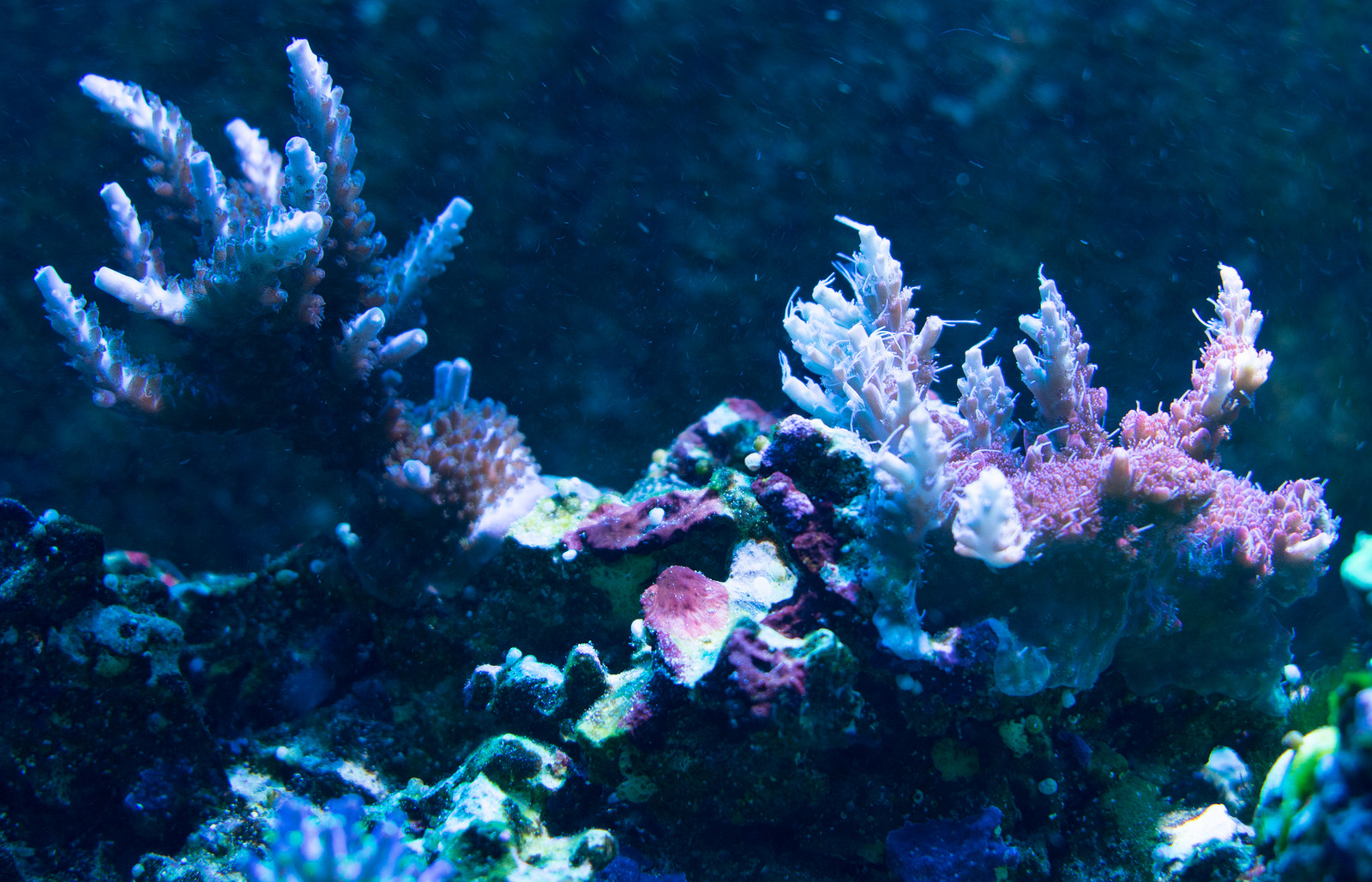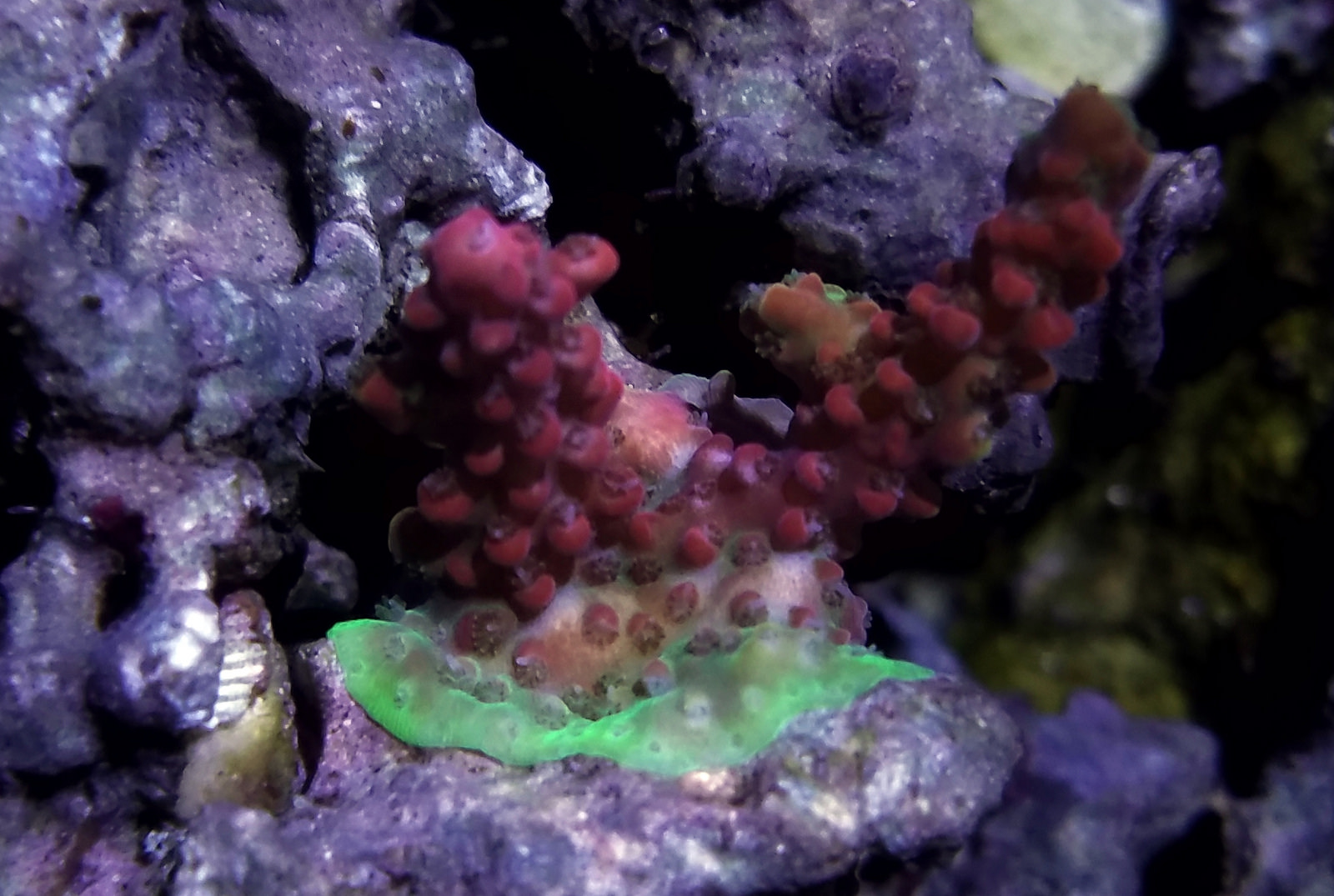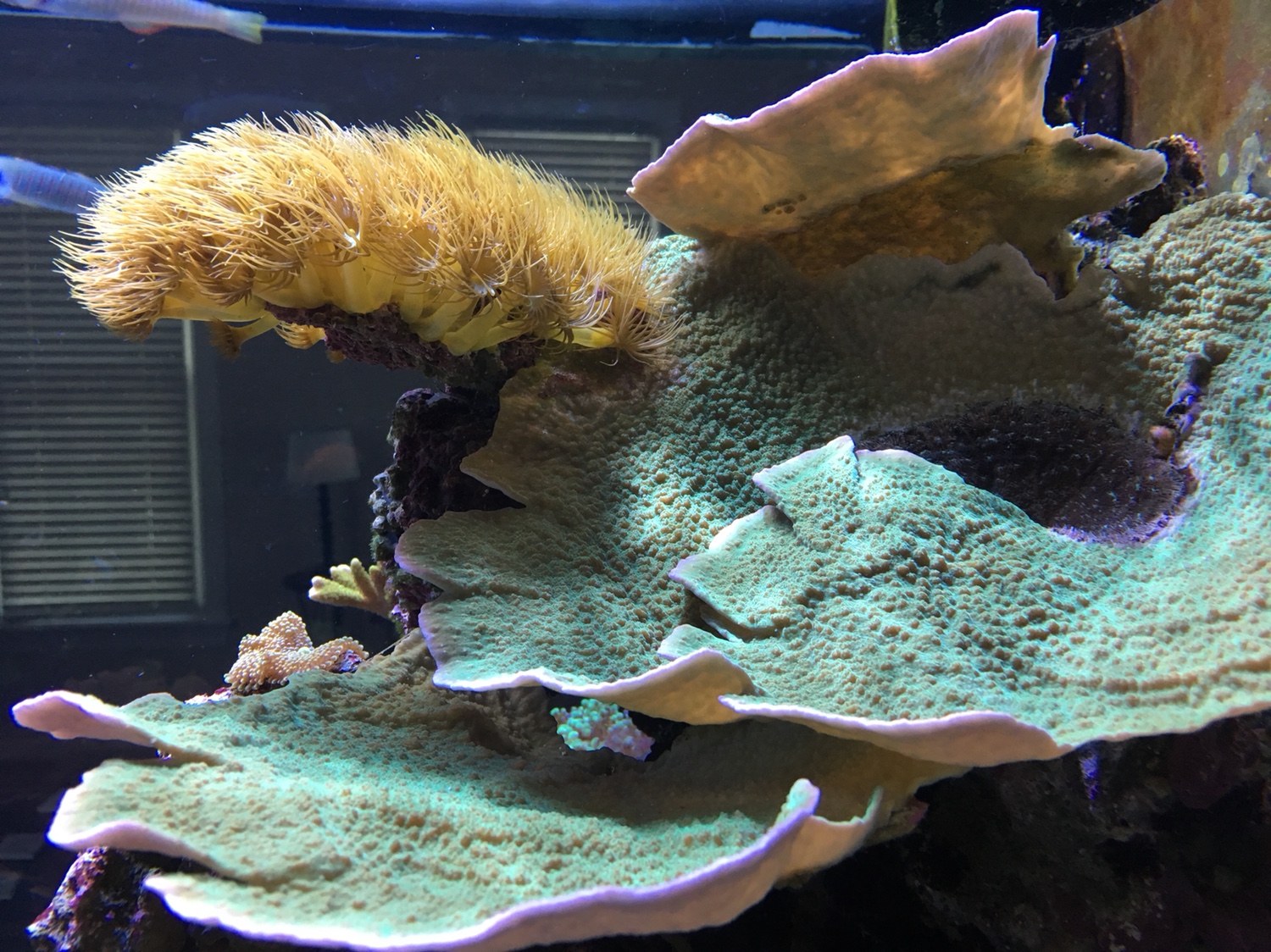I've seen a number of posts regarding LEDs and the shading issues they create that lead to STN at the base of corals. The notion seems crazy to me because many of my SPS grow in areas of almost no light without demonstrating this behavior. It seems to me there has to be something else that causes this or is exacerbated by the lack of light instead of purely a lighting issue. One of the videos by Triton showed corals that were growing well on the undersides, out of light as well.
The frags in the picture below are only three to four inches in size but have extremely heavy shading; the one of the left is illuminated by a Kessil mounted to the right of it, so there is heavy shadowing cast to the left of the coral; it actually has more growth in this area than anywhere else. The one on the right grew down and behind a ledge that protrudes roughly 3/4" outward (toward the viewer). I have a pikachu that has grown well into a crevice/cave in the rock that couldn't receive less light unless there were none.
Any theories on the root cause? Am I crazy? These are just frags, you don't know what you're talking about? Any other thoughts?

Edit: The only adjustments made to this image were exposure, white balance, and lens correction; no contrast, no saturation, nothing else.
The frags in the picture below are only three to four inches in size but have extremely heavy shading; the one of the left is illuminated by a Kessil mounted to the right of it, so there is heavy shadowing cast to the left of the coral; it actually has more growth in this area than anywhere else. The one on the right grew down and behind a ledge that protrudes roughly 3/4" outward (toward the viewer). I have a pikachu that has grown well into a crevice/cave in the rock that couldn't receive less light unless there were none.
Any theories on the root cause? Am I crazy? These are just frags, you don't know what you're talking about? Any other thoughts?

Edit: The only adjustments made to this image were exposure, white balance, and lens correction; no contrast, no saturation, nothing else.
Last edited:


















